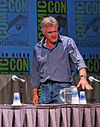Introduction
The Jurassic (/dʒʊˈræsɪk/ juurr-ASS-ik) is a geologic period and stratigraphic system that spanned from the end of the Triassic Period 201.4 million years ago (Mya) to the beginning of the Cretaceous Period, approximately 145 Mya. The Jurassic constitutes the middle period of the Mesozoic Era as well as the eighth period of the Phanerozoic Eon and is named after the Jura Mountains, where limestone strata from the period were first identified.
The start of the Jurassic was marked by the major Triassic–Jurassic extinction event, associated with the eruption of the Central Atlantic Magmatic Province (CAMP). The beginning of the Toarcian Age started around 183 million years ago and is marked by the Toarcian Oceanic Anoxic Event, a global episode of oceanic anoxia, ocean acidification, and elevated global temperatures associated with extinctions, likely caused by the eruption of the Karoo-Ferrar large igneous provinces. The end of the Jurassic, however, has no clear, definitive boundary with the Cretaceous and is the only boundary between geological periods to remain formally undefined. By the beginning of the Jurassic, the supercontinent Pangaea had begun rifting into two landmasses: Laurasia to the north and Gondwana to the south. The climate of the Jurassic was warmer than the present, and there were no ice caps. Forests grew close to the poles, with large arid expanses in the lower latitudes. (Full article...) (Full article...) Selected article on the Jurassic world and its legacies
Arthropods are members of the phylum Arthropoda, and include the insects, arachnids, and crustaceans. They are characterized by their jointed limbs and cuticles. The rigid cuticle inhibits growth, so arthropods replace it periodically by moulting. The arthropod body plan consists of repeated segments, each with a pair of appendages. Their versatility has enabled them to become the most species-rich members of all ecological guilds in most environments. They have over a million described species, making up more than 80% of all described living animal species. They range in size from microscopic plankton up to forms a few meters long.
Like their exteriors, the internal organs of arthropods are generally built of repeated segments. Their vision relies on various combinations of compound eyes and pigment-pit ocelli. Arthropods also have a wide range of chemical and mechanical sensors, mostly based on modifications of the many setae (bristles) that project through their cuticles. Nearly all arthropods lay eggs. Arthropod hatchlings vary from miniature adults to grubs and caterpillars that lack jointed limbs and eventually undergo a total metamorphosis to produce the adult form. The evolutionary ancestry of arthropods dates back to the Cambrian period. The group is generally regarded as monophyletic, and many analyses support the placement of arthropods with cycloneuralians (or their constituent clades) in a superphylum Ecdysozoa. Overall however, the basal relationships of Metazoa are not yet well resolved. Likewise, the relationships between various arthropod groups are still actively debated. (see more...) Selected article on the Jurassic in human science, culture and economics
Jurassic Park III is a 2001 American science fiction adventure monster film. It is the third installment in the Jurassic Park franchise and a sequel to the 1997 film The Lost World: Jurassic Park. It is the series' first film that was not directed by Steven Spielberg nor based on a book by Michael Crichton (though numerous scenes in the film were ultimately taken from Crichton's novels Jurassic Park and The Lost World). The film takes place on Isla Sorna, off Central America's Pacific coast, the island featured in the second film, where a divorced couple has tricked Dr. Alan Grant into going in order to help them find their son.
After the success of Spielberg's Jurassic Park, Joe Johnston expressed interest in directing a sequel, a film adaptation of The Lost World. Spielberg instead gave Johnston permission to direct the third film in the series, if there were to be one. Production of Jurassic Park III began on August 30, 2000. Upon its release, the film received mixed reviews, with many praising the visual effects and action scenes but finding the plot clichéd and unoriginal. Despite being less well-received than the previous films, Jurassic Park III was a box office success, grossing $368 million worldwide. (see more...) Selected image
Did you know?
Need help?Do you have a question about Abyssal/Portal:Jurassic that you can't find the answer to? Consider asking it at the Wikipedia reference desk. GeochronologyEpochs - Early Jurassic - Middle Jurassic - Late Jurassic Landmasses - Baltica - Gondwana - Laurentia - Siberia Fossil sites - Beecher's Trilobite Bed - Walcott–Rust quarry Researchers - Charles Emerson Beecher - Charles Lapworth - Charles Doolittle Walcott Quality ContentFeatured Mesozoic articles - Bone Sharps, Cowboys, and Thunder Lizards - Bone Wars - Edward Drinker Cope - Geology of the Capitol Reef area - Geology of the Death Valley area -Geology of the Grand Canyon area - Geology of the Zion and Kolob canyons area Good Mesozoic articles - Chitinozoan - Coal ball - Dimetrodon - History of paleontology - Evolutionary history of life - Ornatifilum - Opabinia - Paleontology- Schinderhannes - Small shelly fauna - Temnospondyli - Tiktaalik - Waptia SubcategoriesRelated contentAssociated WikimediaThe following Wikimedia Foundation sister projects provide more on this subject:
|





















